Regional MSK Disorders Print Page
Overview
While many conditions rheumatologists see can affect many different body areas at the same time, there are also a number of conditions which affect only one area, often because of a muscle or tendon problem. Below you will find common diagnoses a rheumatologist might see, and how they are best treated. Exercises are a recurring theme. Throughout this page you will find sample exercises which may help your problem. Remember, to ensure the best treatment for your specific situation, always speak with your physician first.
Rotator Cuff Tendinitis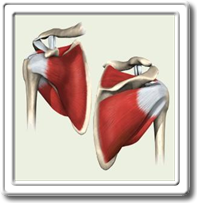
- Rotator Cuff Tendinitis is one of the most common causes for shoulder pain. It is due to an injury or inflammation of one or more of four muscles which surround and protect the shoulder joint.
- Pain is the most common symptom, worse with shoulder activity and better with rest
- Often, with simple manoeuvres on physical examination, your rheumatologist can diagnose rotator cuff tendinitis and rule out other possible causes for shoulder pain.
- One of the most important components of treating rotator cuff tendinitis is physiotherapy. Exercises are important to help reduce inflammation and prevent further damage.
- If pain is preventing therapy from being completed regularly, medication may be necessary to help alleviate pain and allow for resumption of these important exercises. Talk with your physician which of the following options is best for you:
- Ice or Heat
- Anti-Inflammatories (NSAIDs)
- A local cortisone injection
- Download Rehabilitation Exercises for Rotator Cuff Tendonitis (PDF)
Tennis Elbow/Golfer’s Elbow
- Tennis Elbow (lateral epicondylitis) and Golfer’s Elbow (medial epicondylitis) are common causes for elbow pain. It is due to an injury or inflammation to muscles which attach to bone on the lateral or medial side of the elbow. The main part of these muscles are found the forearm between the elbow and wrist.
- Pain is the most common symptom, felt at the muscle insertion site at the elbow, but also with wrist movement or making a fist. It is worse with activity and better with rest.
- Your rheumatologist can diagnose either of these conditions with simple manoeuvres on physical examination.
- Physiotherapy is an important component of both these conditions.
- Other treatment modalities include:
- Tennis Elbow Brace (worn in reverse for Golfer’s Elbow)
- Ice or Heat
- Anti-Inflammatories either by mouth or topically applied
- A local cortisone injection
- Download Rehabilitation Exercises for Tennis Elbow (PDF)
- Download Rehabilitation Exercises for Golfer’s Elbow (PDF)
 De Quervain’s Tenosynovitis
De Quervain’s Tenosynovitis
- De Quervain’s Tenosynovitis involves the tendons on the thumb side of the hand. Pain is usually described at the base of the thumb, often worse with use and better with rest. Your rheumatologist can diagnose this condition with simple manoeuvres on physical examination.
- Treatment modalities include:
- Avoidance of aggravating maneuvers
- Physiotherapy exercises
- Ice or Heat
- Rest, sometimes in the form of a thumb splint
- Anti-inflammatories
- A local cortisone injection
- Download Rehabilitation Exercises for De Quervain’s Tenosynovitis (PDF)
Lower Back Pain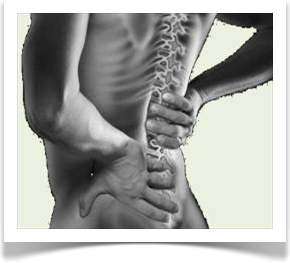
- Lower back pain is very common, with most people experiencing it at some time in their lives.
- For most, there is no serious underlying condition. Rather, it is usually a benign mechanical process, often from one of or a combination of disc, ligament or muscle involvement.
- Back pain resolves for most people on its own. For some though, further treatment may be necessary.
- Physiotherapy and appropriate back exercises are an important component to treat back pain.
- Other treatment modalities include:
- Ice or Heat
- Anti-Inflammatories
- Other analgesics like acetaminophen
- Muscle Relaxants
- Physical treatment like acupuncture or massage
- Download Rehabilitation Exercises for Back Pain (PDF)
Trochanteric Bursitis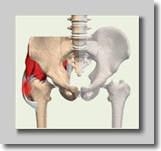
- Trochanteric Bursitis is pain that occurs on the lateral aspect of hip. It feels worse when using that area, including lying on the affected side, walking and climbing stairs. It can usually be diagnosed by your physician on a physical examination.
- Physiotherapy with appropriate exercises is an important component to treatment.
- Other treatment modalities include:
- Ice or Heat
- Anti-Inflammatories
- A local cortisone injection
- Download Rehabilitation Exercises for Trochanteric Bursitis (PDF)
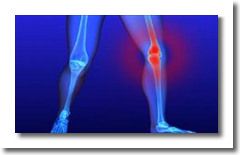 Patellofemoral Syndrome
Patellofemoral Syndrome
- Patellofemoral Syndrome is a common cause of knee pain.
- Pain is often localized to the front of knee around the kneecap. The pain is worse with crouching and using stairs. A diagnosis can usually be made on physical examination by your physician.
- Physiotherapy with appropriate exercises, particularly quadriceps strengthening, is an important component to treatment.
- Other treatment modalities include:
- Anti-inflammatories (oral or topical)
- Bracing
- Download Rehabilitation Exercises for Patellofemoral Syndrome (PDF)
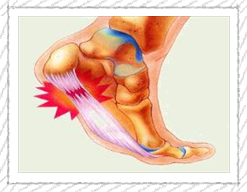 Plantar Fasciitis
Plantar Fasciitis
- Plantar Fasciitis causes pain at the heel and/or along the bottom surface of the foot. It is worsened by placing pressure on the bottom of the foot with activities such as walking and running.
- Your physician can usually make this diagnosis on physical examination.
- Physiotherapy with appropriate exercises is an important component to treatment.
- Other treatment modalities include:
- Orthotics
- Avoid exacerbating activities
- Night splint
- Anti-inflammatories
- A local cortisone injection
- Surgical intervention
- Download Rehabilitation Exercises for Plantar Fasciitis (PDF)